Palladios I quatto libri
|
-
About this Collection
Andrea Palladio’s monumental I quattri libri dell'architettura (The Four Books of Architecture), first published in 1570 and republished and translated many times through the centuries, was the primary vehicle for spreading his fame and influence.
Modeled loosely on earlier works by Vitruvius, Leon Battista Alberti and Sebastiano Serlio, Palladio’s great contribution was to explain and illustrate the principles of classically-inspired Renaissance architecture in a clear, rational way.
This visual clarity, along with his explanatory text, enabled this work to become perhaps the most influential architectural book in the western world. It was the first to include contemporary designs by the author, and his depictions of ancient Roman buildings established the canon of classical architecture that endures to this day.
-
Title page to Palladio's Second Book
Rich woodcut title page of Book Two of the Steedman 1581 edition of Palladio’s Four Books of Architecture. This, the second edition of this great work, appeared a year after his death.
The design features the allegorical figures of Geometry and Architecture gesturing in front of double Corinthian columns. These figures flank the prominent device of the Venetian printer Bartolomeo Carampello, an image of the Ship of Fortune. Above the title sits the crowned goddess Minerva, the Queen of Virtues (Regina Virtus).
-
Ground plan and Section of Palladio's Villa Rotonda
Book Two of Andrea Palladio's I quattri libri dell'architettura was one of the first to deal with designs for private residences, especially focusing on the villa. Shown here are the ground plan and elevation of the villa that has come to be known as La Rotonda. It is also known as the Villa Capra and the Villa Almerico-Valmarana.
It was the last of Palladio's villas to be built, beginning around 1565, and is considered by many to be his masterpiece. It is a centralized, monumental structure, severely correct in its proportions and decoration. The central dome was modeled on that of the Pantheon in Rome.
This building was especially influential in 18th century Great Britain, where architects such as Colen Campbell and other Palladians designed buildings that were virtual replicas of it.
-
Palladio's design for a monumental bridge
Palladio's Book Three dealt with the structures of cities, with particularly complete and influential treatment of bridges. Pictured here is a design for a monumental bridge.
-
Palladio's design for a monumental bridge
Palladio's Book Three dealt with the structures of cities, with particularly complete and influential treatment of bridges. Pictured here is a design for a monumental bridge.
-
Side view of the Roman Temple of Fortuna as illustrated by Palladio
Palladio's Book Four is a survey and explication of ancient Roman structures, emphasizing temples.
This page illustrates side views of the Temple of Fortuna Virilis in Rome, including a depiction of the carved frieze that ran around the entire building. This temple was particularly admired and imitated by 18th century architects, including Thomas Jefferson.
-
Text page of Palladio's description of Doric style
-
The Doric order described and illustrated by Palladio
Book One of Andrea Palladio's I quattri libri dell'architettura (The Four Books of Architecture) is devoted to fundamental elements of architecture and building materials, and includes detailed descriptions and illustrations of the five orders of architecture. This page, from the Steedman's 1581 edition, illustrates the Doric style.
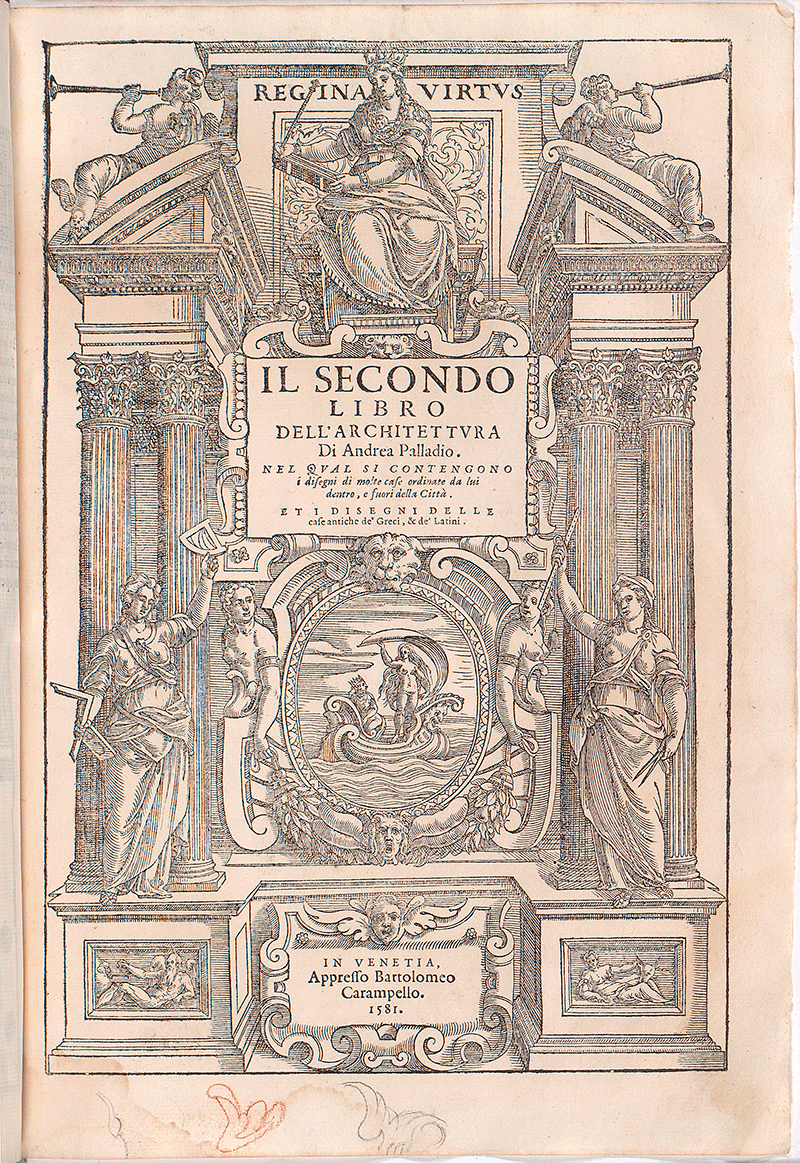 View Image
View Image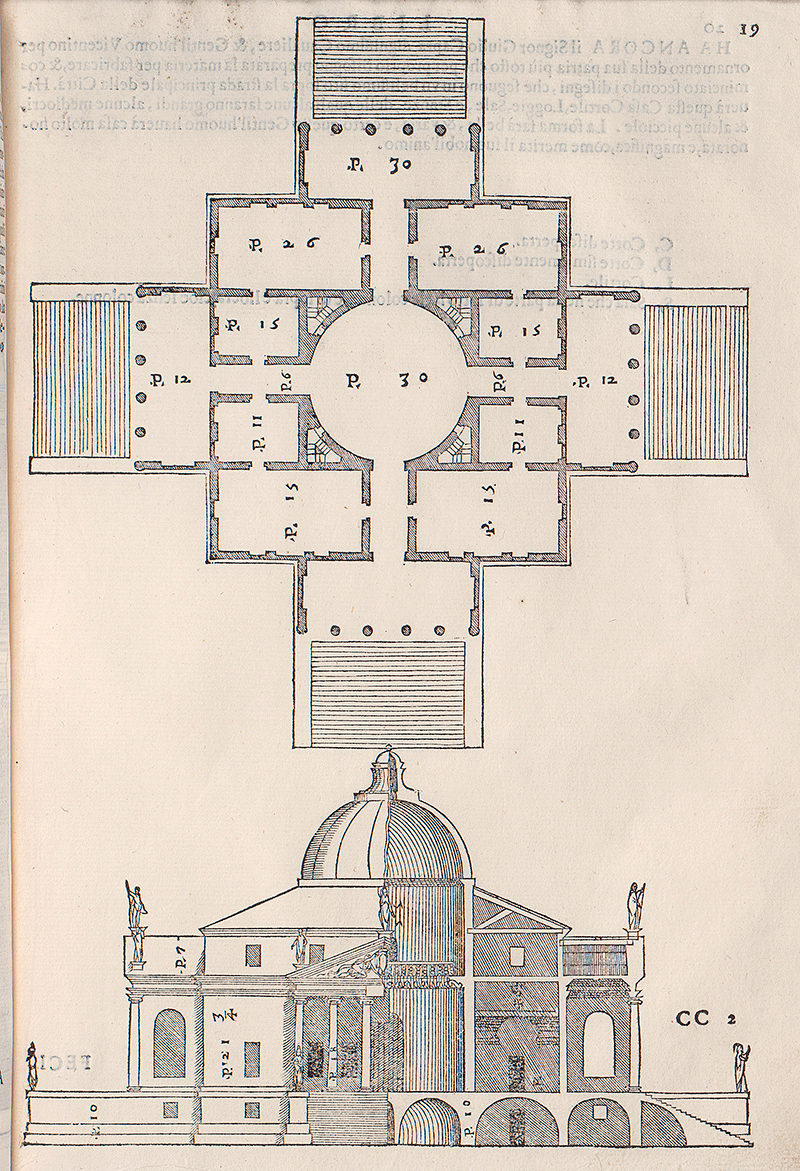 View Image
View Image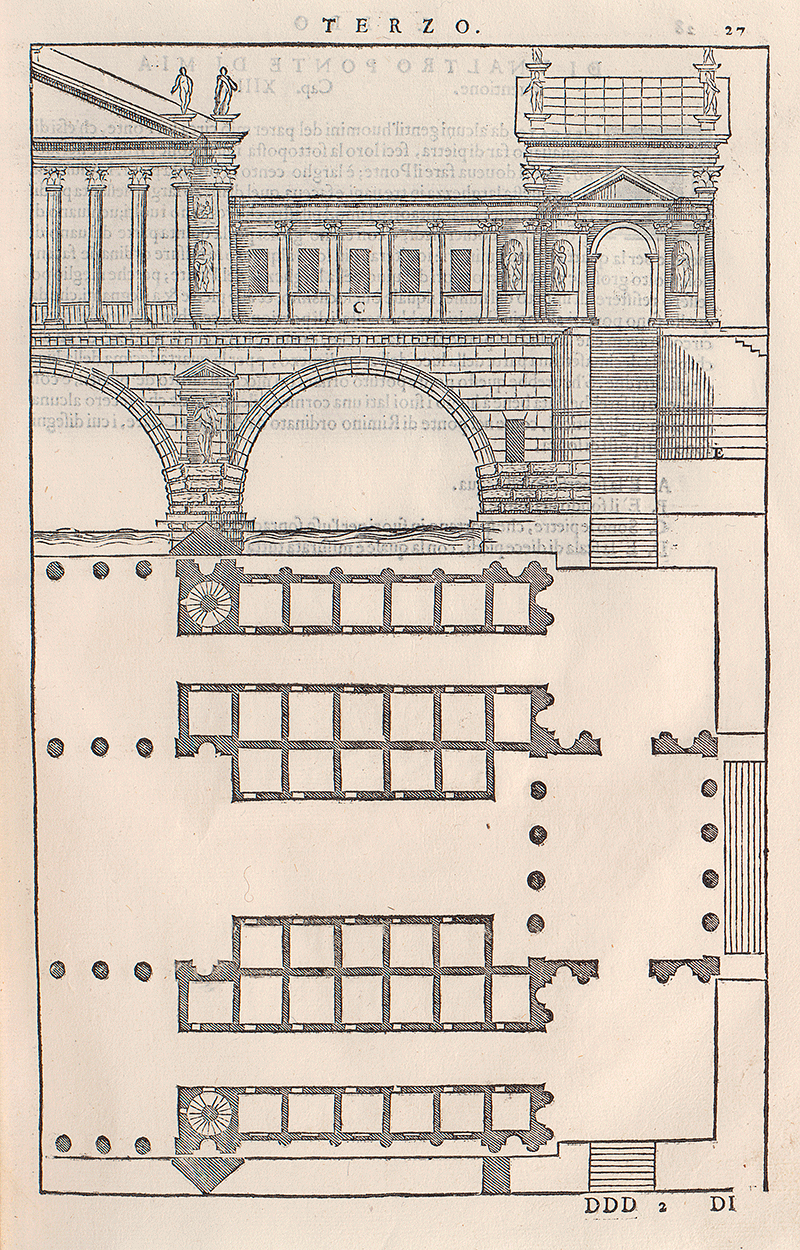 View Image
View Image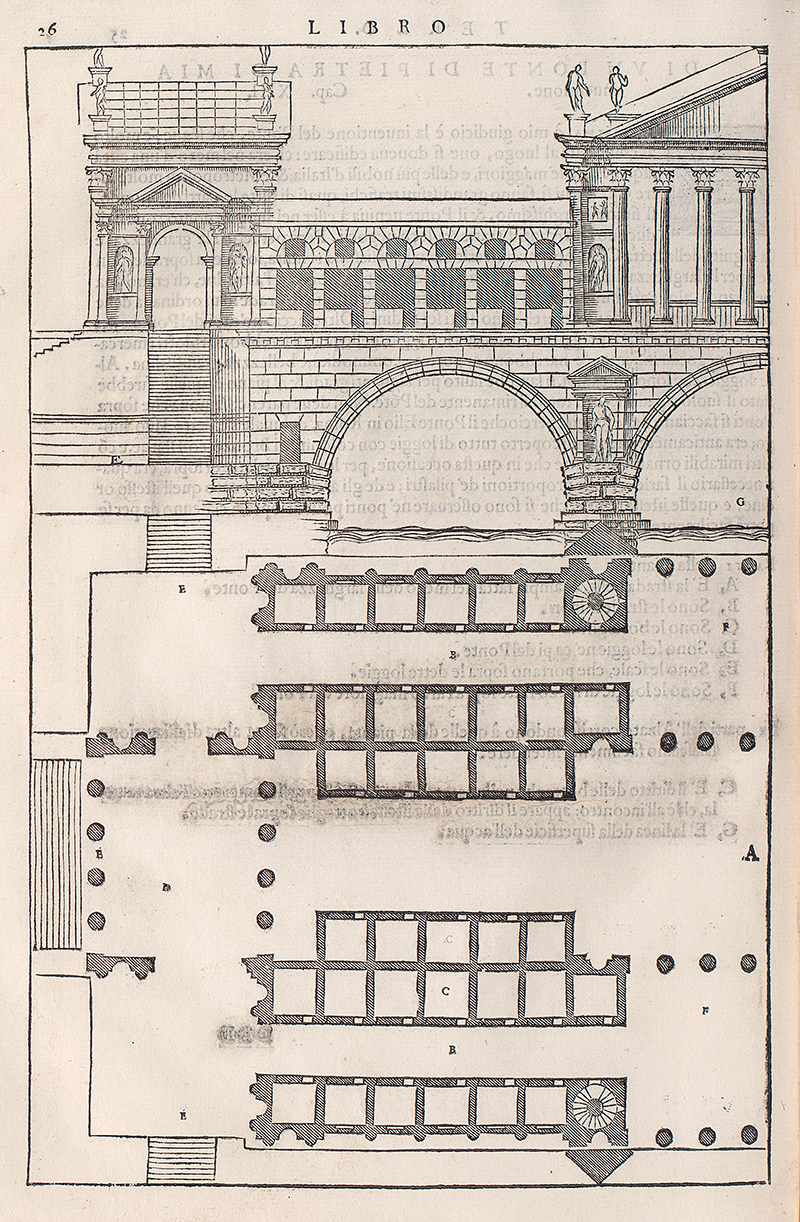 View Image
View Image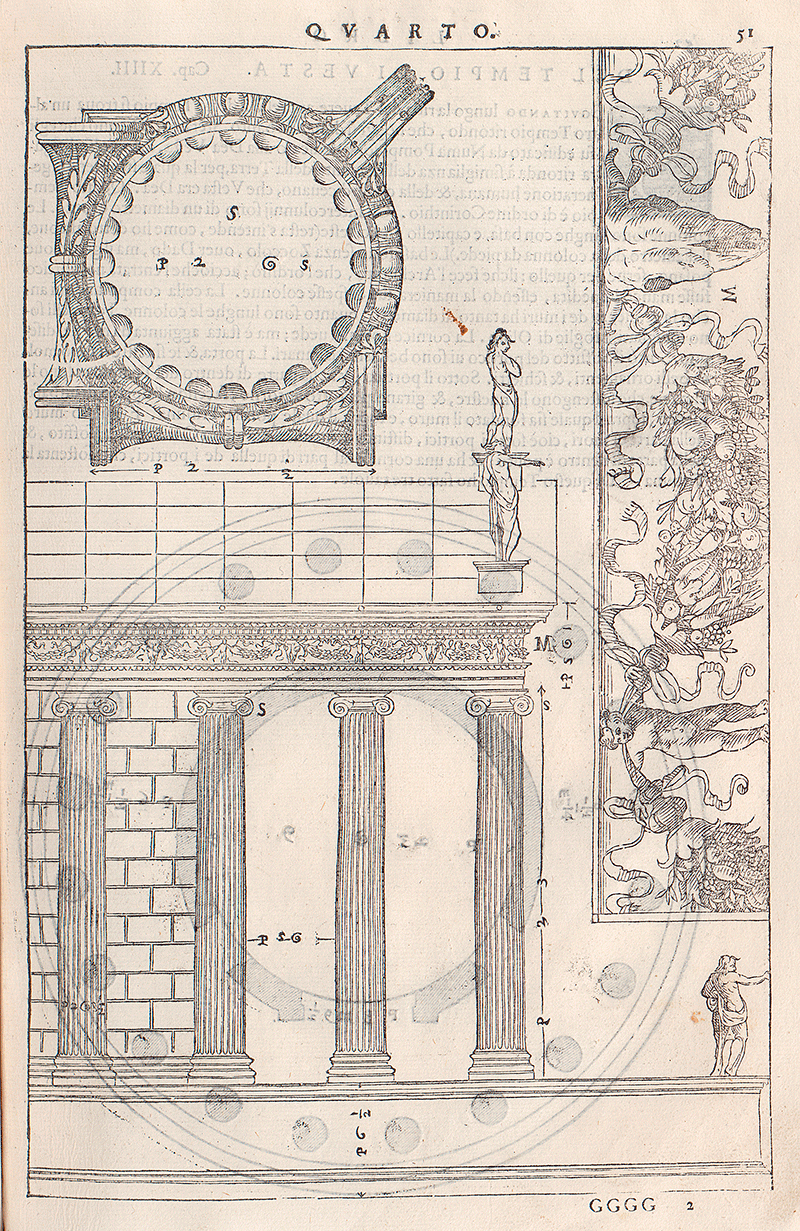 View Image
View Image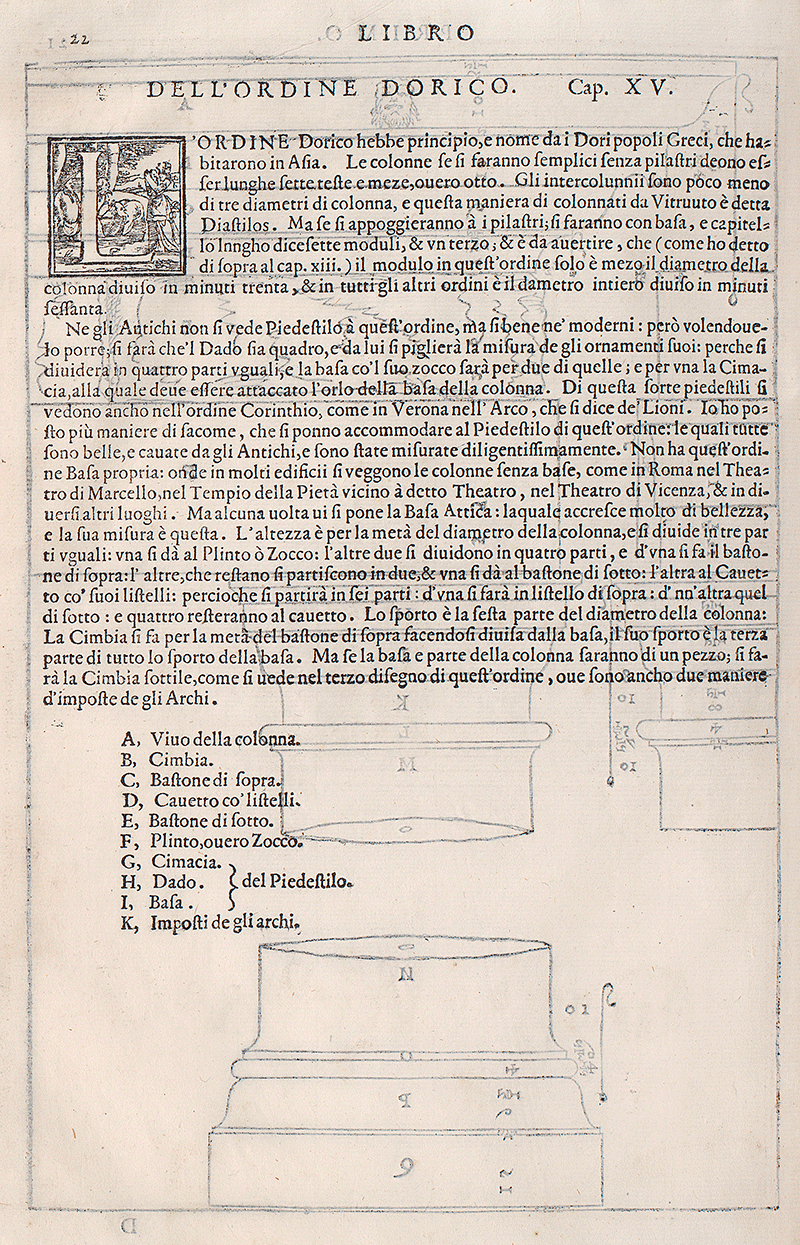 View Image
View Image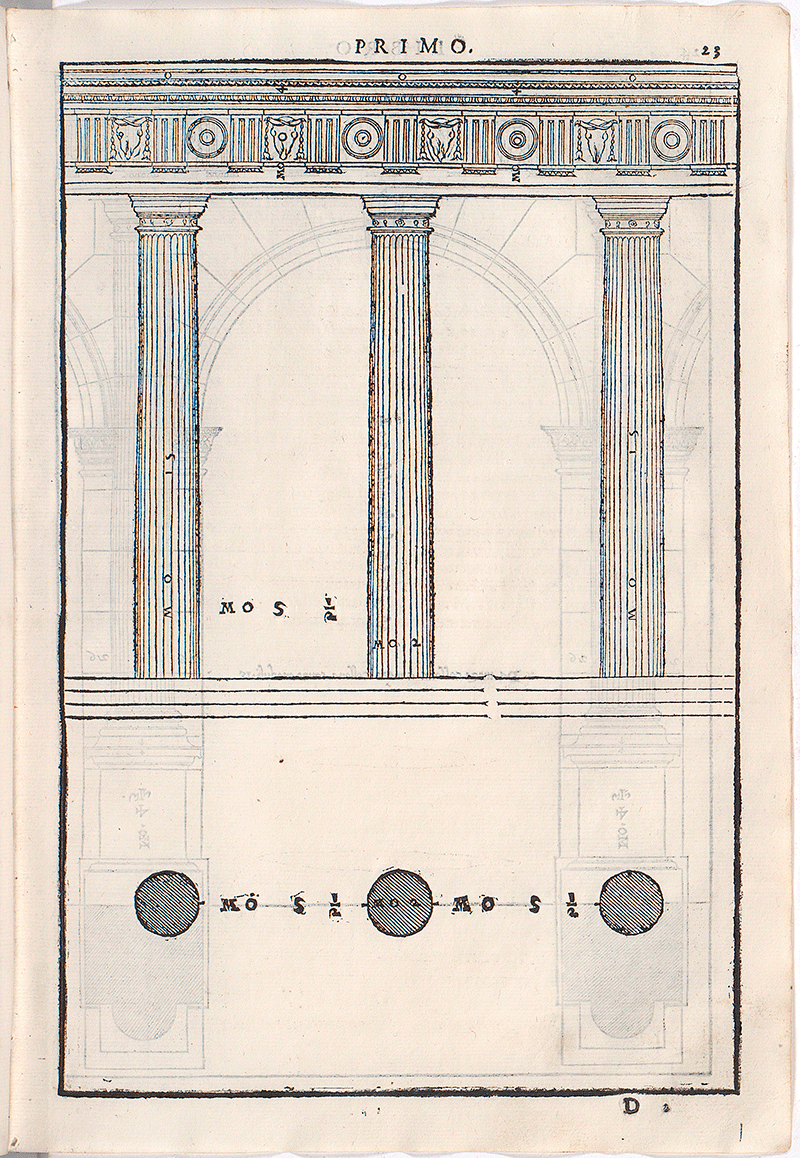 View Image
View Image